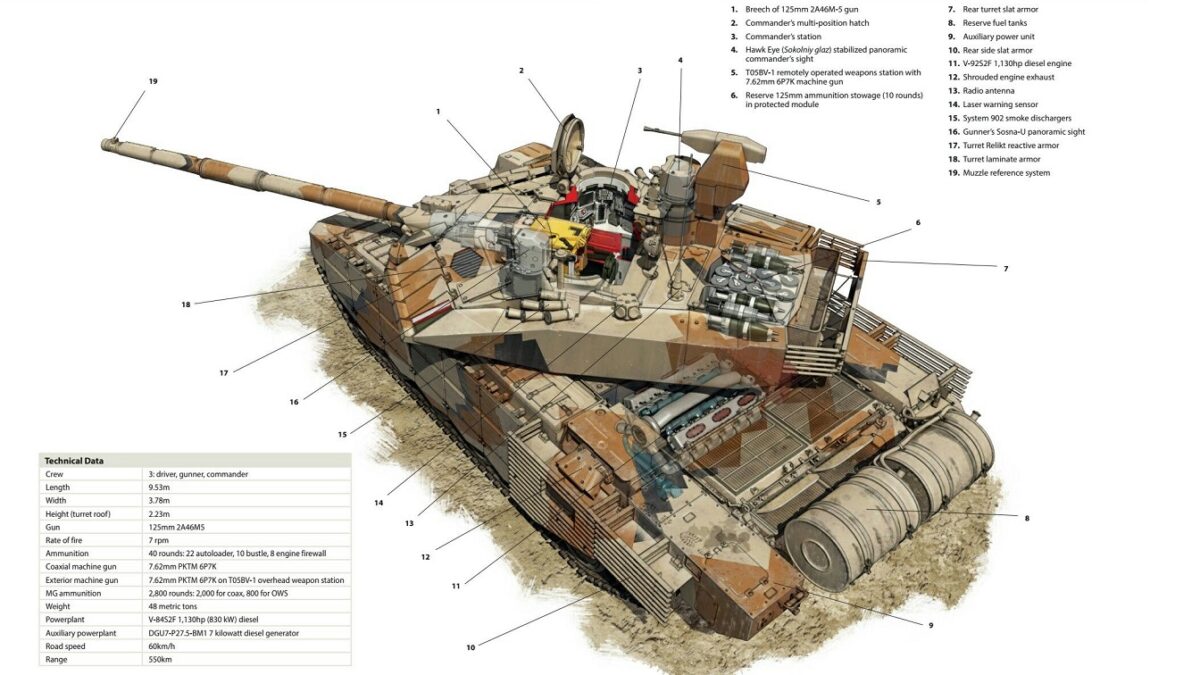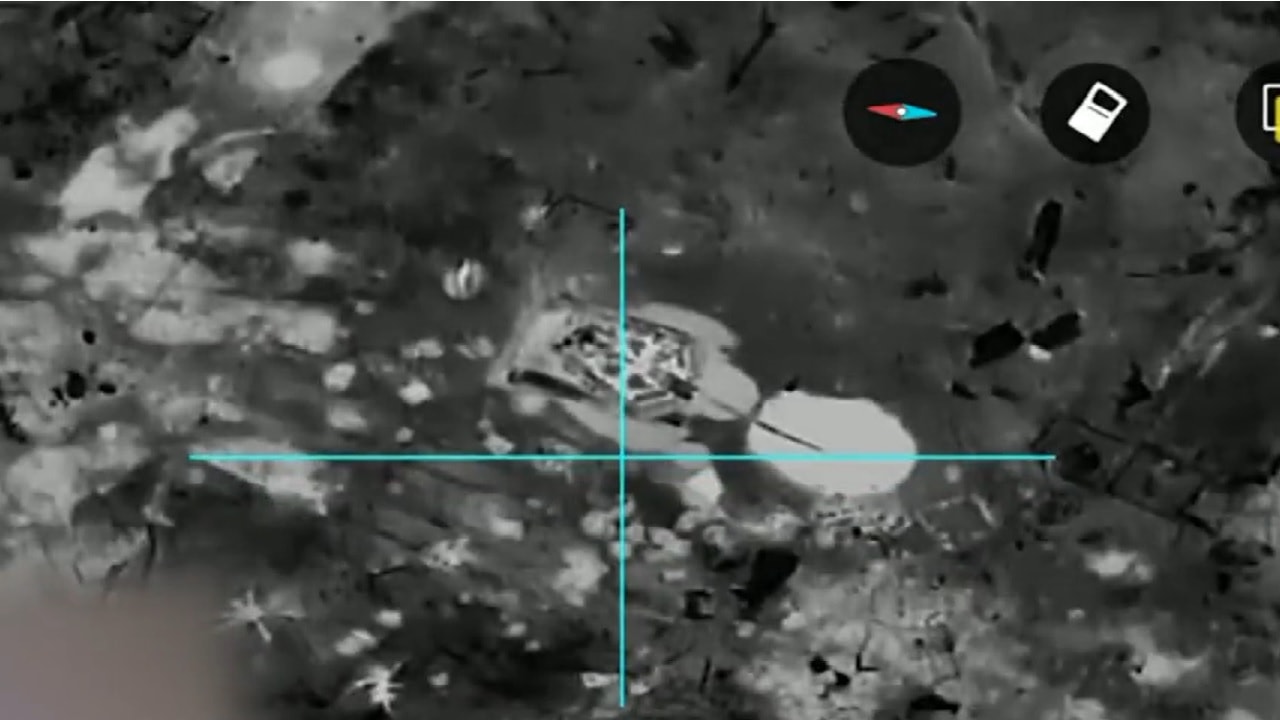Russia’s T-90 main battle tank (MBT) began life as a Soviet program. While most modern militaries had embraced the concept of a main battle tank and focused their production and deployment on a single variant, the Soviet army had ordered T-64s, T-72s, and T-80s. Although the three tanks were similar, the differences were wide enough that it created a large logistical and supply burden. To ameliorate this problem, in 1986 design work was approved on Object 188, an upgrade of the T-72.
Design, Specs, and Capabilities
From the outside, the T-90 appears similar to its predecessors, the T-72 and the T-80. This apparent similarity belies several upgrades, which make it a superior fighting machine. Defensively, it incorporates newer composite armor as well as explosive reactive armor to defeat incoming missiles. Its Shtora-1 countermeasures suite offers infrared dazzlers, automatic smoke dispensers, and a laser warning system to warn the crew of a missile lock.
Offensively, the T-90 is equipped with a 125mm smoothbore tank gun, which is augmented by a sophisticated fire control system. Thermal and infrared imaging allows the T-90 to engage targets up to 8,000 meters away. The T-90 is powered by one of several variants of diesel engines. This marks a departure from the T-80, which used a gas turbine engine similar to those found in the U.S. Army’s M1 Abrams. This change was due to the notorious consumption and unreliability of the engine in the T-80.
The T-90 in Combat
The T-90 has seen service in several conflicts prior to joining the war in Ukraine. In the late 1990s, several of the tanks saw service in Checnya with disputed results. Some claim Chechen fighters were able to disable or destroy the vehicles with multiple close-range hits from rocket-propelled grenades (RPGs) while the Moscow Defense Brief alleges one T-90 was able to survive and continue fighting despite being hit by seven RPGs. In 2016, a T-90 in service of the Syrian Army during the Syrian Civil War was able to survive a direct frontal hit from a U.S.-made anti-tank missile.
How the T-90 is Faring in Ukraine
So far, the T-90 has failed to match up to that record or have a major impact on the conflict in Ukraine. Military tracking blog Oryx has documented 61 losses of T-90s since the beginning of hostilities. These losses may not, however, reflect entirely on the design and capabilities of the T-90.
Most of the combat in Ukraine has occurred in urban or suburban environments where confined spaces are hardly ideal for tank warfare. Furthermore, the advent of new threats appears to have rendered obsolete some of the defenses of the T-90. Loitering munitions such as the Lancet as well as top-attack anti-tank guided munitions such as the U.S.-made Javelin have so far proved effective against the Shtora defense system.
Finally, human factors always play a role. From the outset of the conflict, it seems clear Russia desperately needs to update its tactical doctrine. No matter how advanced and capable any piece of military hardware is, it will be useless if not employed correctly. Add to that untrained operators and it is no surprise that the T-90 has not been as dominant as may have been expected.

T-90 Tank. Image Credit: Creative Commons.
Maya Carlin, a Senior Editor for 19FortyFive, is an analyst with the Center for Security Policy and a former Anna Sobol Levy Fellow at IDC Herzliya in Israel. She has bylines in many publications, including The National Interest, Jerusalem Post, and Times of Israel. You can follow her on Twitter: @MayaCarlin.
From 19FortyFive
A Russian Submarine Accidently ‘Destroyed Itself’
Total Massacre’: Ukraine Footage Shows Russian Cruise Missile Shipment Attacked

